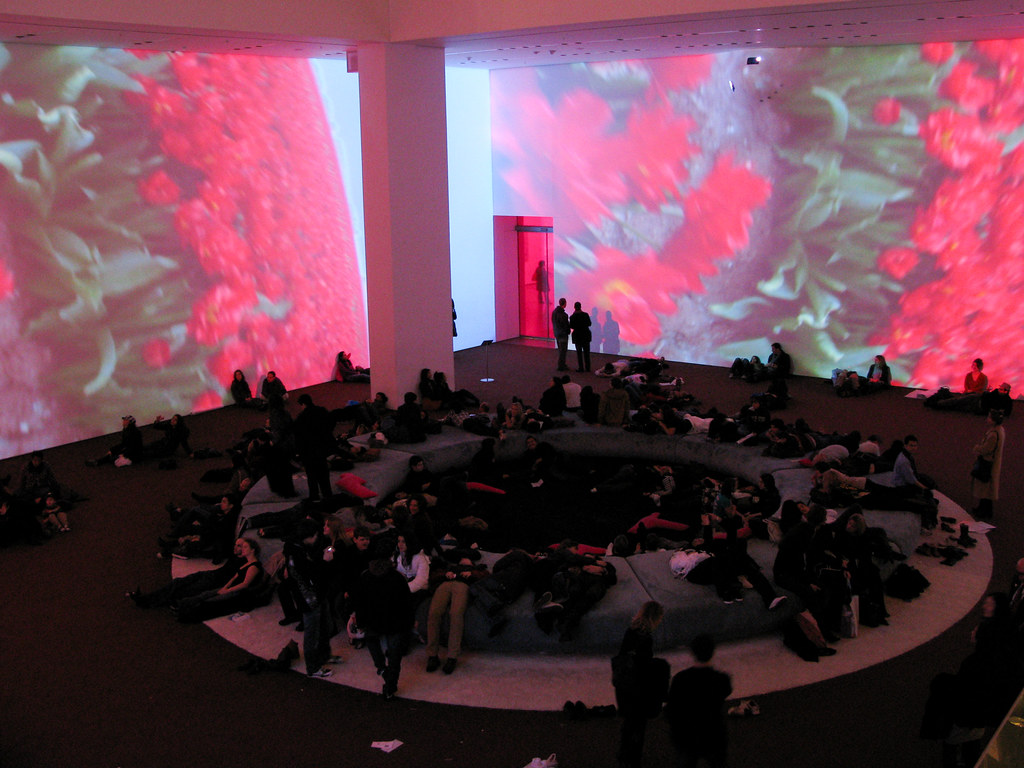Video artists create and manipulate videos, often intermingling with other disciplines such as sculpture, architecture, and performance art, among many others. The medium enables spectacular installations that are favored by contemporary art museums around the world.
Sometimes confused with film, video art uses moving picture to convey a message rather than follow a storyline. It does not have any commercial interest, providing artists the freedom to express themselves without the influence of sponsors.
Originated from the Fluxus movement with the goal of creatinga living art, the medium eventually picked up in the 1970s with cameras and editing software becoming mainstream. Today, video artisespecially popular among experimental filmmakers as well as performance and conceptual artists due to its diverse and fluid nature.
Early video artists investigated the influence of television on society in the aftermath of its widespread distribution. This topic is common in the works of Nam June Paik, who is considered to bethe “Father of Video Art”. His installation piece, TV Garden (1974-77), which has recently been on view at London’s Tate Modern, Amsterdam’s Stedelijk Museum, and San Francisco’s Museum of Modern Art, consists of forty television sets scattered amongst plants. Paik examined the conflict between nature and technology, anticipating that screens would invade our everyday lives.
Recently, one of the best contemporary art museums of the world, Museum of Contemporary Art Tokyo, held a major survey of Shigeko Kubota. The artist, who was married to Nam June Paik, is highly acclaimed for her video sculptures that combine video with three-dimensional constructions. Viva Video! consisted of renowned works such as Korean Grave (1993), which is an installation of abstract images and array of colors gliding over the walls and ceiling as light projections bounce off mirrored surfaces of a dome, recalling a traditional Korean burial mound.
Following Paik and Kubota’s pioneering works, artists gained more room for experimentation through technological advancements in the 1980s and 1990s. Bill Viola, for example, experimented with larger installations. The Sleep of Reason (1988), one of his most famous works, immerses viewers in terrifying images that flash over gallery walls abruptly.
As society got more acquainted with digital art and artists created more immersive installations, galleries and collectors have become increasingly attracted to video artin the 2000s. Prominent institutions started building up their video collections.
The Museum of Modern Art commissioned Pipilotti Rist in 2008 to install a massive site-specific work that covered their twenty-five-foot-high atrium with moving pictures. The movie included images of luscious apples, vibrant tulip fields, and succulent strawberries, referencing the pleasures of life. Visitors took their time to experience Rist’s immersive artwork by lounging on the sculptural seating island, which was also designed by the artist.
Video art has flourished over decades with a future focused lens and openness to experimentation. Today, the art form has become ubiquitous thanks to advancing technologies, creative visions, and decreasing prejudices over digital art ownership.
Photo: Pipilotti Rist, Pour Your Body Out (2008), MoMA.Courtesy of watz.
